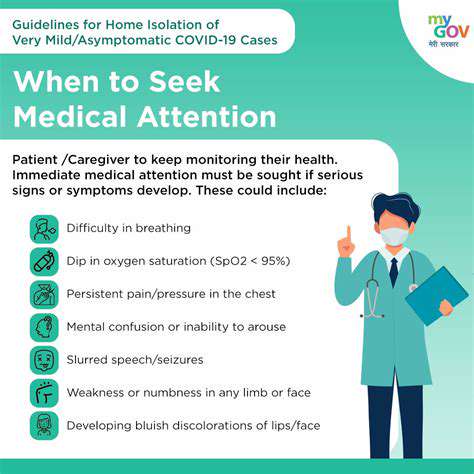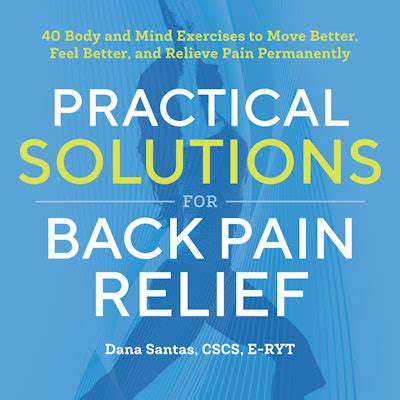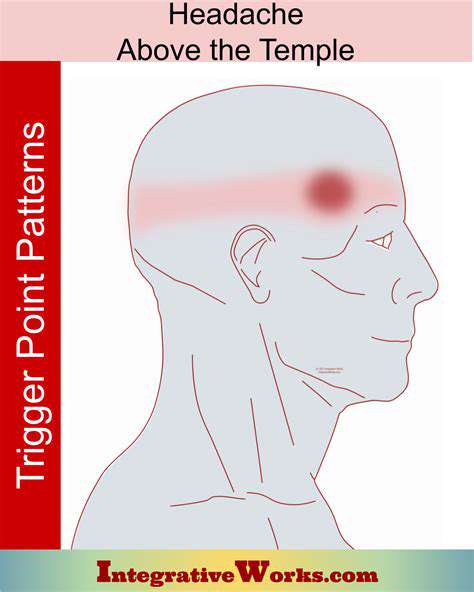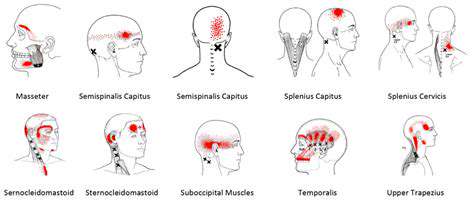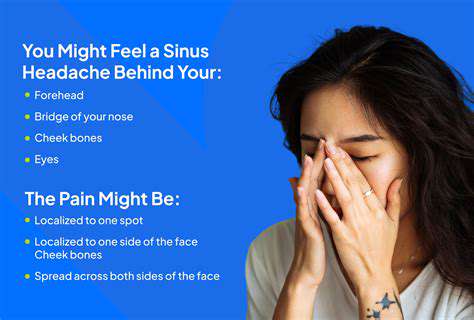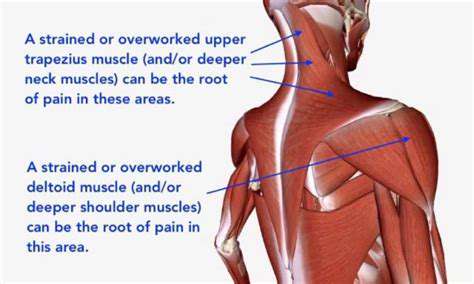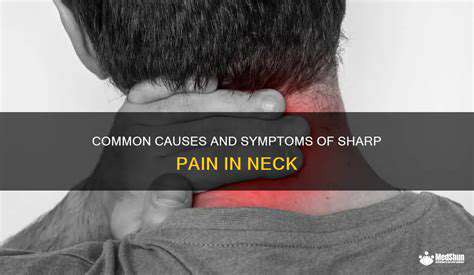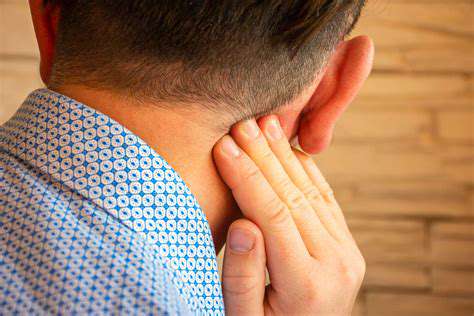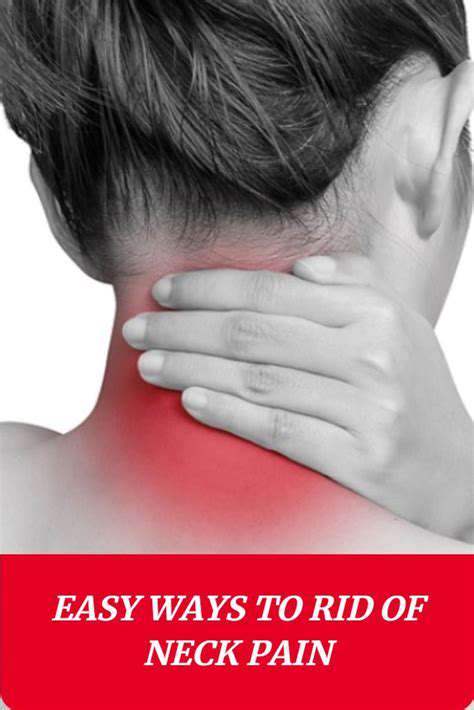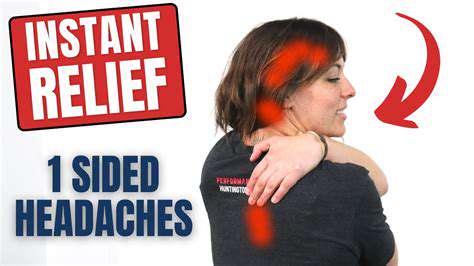Explore comprehensive insights into migraines and headaches including causes, triggers, treatments, and natural remedies. Empower yourself with knowledge to manage pain effectively and improve your daily well-being
Possible Medical Conditions and When to Seek HelpAre you experiencing persistent forehead pain accompanied by coughing? These symptoms can be caused by various medical conditions, ranging from minor issues to more serious health concerns. Recognizing the underlying causes and knowing when to seek medical attention are crucial for effective treatment and peace of mind. Common Causes of Forehead Pain and CoughingForehead pain coupled with coughing can stem from several health issues. Some of the most common causes include:- Sinus infections (Sinusitis): Inflammation of the sinuses often results in forehead pain due to pressure buildup. Coughing may occur as a reflex response to postnasal drip.- Migraine headaches: Migraines can cause intense forehead pain, sometimes accompanied by coughing or other symptoms like nausea and sensitivity to light.- Cold or flu: Viral infections affecting the respiratory system can cause forehead discomfort along with coughing, congestion, and fatigue.- Allergic rhinitis: Allergies can lead to sinus pressure and headaches, often with coughing triggered by postnasal drip.- Other respiratory infections: Conditions like bronchitis or pneumonia may present with coughing and head pain as part of broader symptoms. When to Seek Medical AttentionWhile mild symptoms may resolve on their own, certain signs indicate the need for prompt medical evaluation. You should seek medical attention if you experience:- Severe or worsening forehead pain- Pain that persists beyond a few days- High fever or chills- Sudden vision changes or severe headache- Difficulty breathing or chest pain- Persistent cough that produces blood or thick, discolored mucus- Signs of neurological issues, such as weakness, confusion, or loss of coordinationEarly diagnosis and treatment are vital for conditions like sinus infections, migraines, or more serious illnesses such as pneumonia or other respiratory infections. Prevention and Management TipsTo reduce the risk of forehead pain and coughing episodes:- Maintain good nasal hygiene and hydration- Manage allergies with appropriate medications- Practice good hand hygiene to prevent infections- Avoid irritants like smoke and pollutants- Seek medical advice for persistent or severe symptoms Final ThoughtsForehead pain and coughing are common symptoms that can be caused by various benign to serious health issues. Understanding the potential causes and recognizing warning signs can help you seek timely medical care. If symptoms persist or worsen, consult a healthcare professional for proper diagnosis and treatment to ensure your health and well-being.---For more information on related medical conditions and when to see a doctor, visit our health resources or contact your healthcare provider today.
May 02, 2025
Neck and Top of Head Pain: Possible Causes and Solutions
May 02, 2025
My Left Temple Hurts: Understanding Symptoms and Remedies
May 01, 2025
My Head Hurts When I Blow My Nose: What to Know
May 01, 2025
Lower Head Upper Neck Pain: Causes and Treatment Options
May 01, 2025
Left Side Head Pain When Bending Over: Understanding Symptoms
May 01, 2025
Head Pain When Walking: Causes and Relief Options
May 01, 2025
Head Hurts When Turning Head: Understanding Symptoms
Apr 30, 2025
Head Hurts When I Blow My Nose: Causes and Remedies
Apr 30, 2025
Head Hurting After Workout: Possible Causes and Solutions
Apr 30, 2025
Headache and Neck Pain: Understanding Symptoms and Solutions
Apr 30, 2025
Crown of Head Sore: Causes and Treatment Options
Apr 30, 2025
Back Head Pain When Lying Down: Causes and Remedies
Apr 29, 2025
Neck Pain After Falling and Hitting Head: What to Do
Apr 29, 2025
Understanding, Treatment, and PreventionExperiencing sharp neck pain can be debilitating and may stem from various causes. Identifying the underlying reason is crucial for effective management and prevention. This comprehensive guide explores common causes of sharp neck pain, treatment options, and preventive strategies. Common Causes of Sharp Neck Pain Muscle Strain from Sudden MovementsMuscle strains often occur due to quick and awkward head movements. Lack of warm-up before physical activities can increase the risk. Be mindful during exercises or sudden actions. Whiplash InjuryCommon in car accidents, whiplash results from the head whipping back and forth, leading to severe pain and stiffness. Early treatment is crucial for recovery, which can take weeks or months. Cervical Disc HerniationA herniated cervical disc can press on spinal nerves, causing intense pain and neurological symptoms. Recognizing the signs early can lead to effective treatment options like physical therapy or surgery. Poor Posture and ErgonomicsProlonged poor posture, especially at work, can strain your neck, leading to discomfort. Setting up an ergonomic workspace can greatly alleviate this issue. Degenerative Disc DiseaseAs we age, spinal discs may deteriorate, causing pain and stiffness. Regular physical activity and therapy can help manage this condition. Facet Joint DysfunctionInflamed joints in the spine can result from trauma or repetitive stress, leading to pain when moving your head. Infections and Inflammatory DiseasesOccasionally, sharp neck pain may signal serious health issues like infections or inflammatory diseases, necessitating immediate medical attention. When to Seek Medical AttentionCertain warning signs, like persistent pain radiating to arms or chest, numbness, or accompanying symptoms like fever or unexplained weight loss, warrant immediate medical evaluation. Treatment OptionsTreatment for sharp neck pain varies based on its cause. Options include:- Physical Therapy: Strengthens muscles and improves flexibility.- Medications: NSAIDs can reduce pain and inflammation, while topical analgesics may provide localized relief.- Invasive Therapies: In severe cases, corticosteroid injections or surgery may be necessary. Prevention StrategiesTo minimize the occurrence of sharp neck pain, consider the following:- Ergonomic Adjustments: Maintain proper posture while working.- Regular Stretching and Exercise: Enhance flexibility and muscle strength.- Mindfulness and Stress Management: Techniques like yoga can reduce muscle tension.- Proper Sleep Position: Use supportive pillows to maintain neck curvature. ConclusionSharp neck pain can significantly affect your quality of life. By understanding its causes, seeking timely medical evaluation, and implementing effective treatment and prevention strategies, you can manage and reduce occurrences of neck pain. Always consult healthcare professionals for personalized advice tailored to your needs.
Apr 23, 2025
Causes, Symptoms, and TreatmentExperiencing sharp pain behind the ear can be alarming, often indicating various underlying medical conditions or environmental factors. This comprehensive guide delves into the potential causes, symptoms, and treatment options for this discomfort. Common Causes of Sharp Pain Behind the Ear Medical ConditionsOne common culprit of sharp pain behind the ear is ear infections, which can be viral or bacterial. Symptoms may include swelling, fever, and sharp pain in the affected area. Treatment typically involves antibiotics or over-the-counter pain relief. Temporomandibular joint (TMJ) disorders can also contribute to pain in this region. Problems with the jaw can lead to acute discomfort that may radiate to the ear. Diagnostic imaging and physical therapy may be necessary to address TMJ issues.Additionally, nerve-related conditions like trigeminal neuralgia require specialized assessment and care. Injury and OverusePhysical injuries to the head, neck, or jaw—often from sports or accidents—can cause sharp pain behind the ear. Overusing the jaw through actions like excessive chewing can also strain surrounding tissues, leading to discomfort. Environmental FactorsShifts in air pressure or prolonged exposure to allergens can heighten sensitivity behind the ear. Changes experienced during flying or diving may lead to discomfort due to fluid buildup in the ear. Recognizing SymptomsWhen sharp pain occurs, it may be accompanied by headaches, dizziness, or a sensation of fullness in the ear. Noting these symptoms is vital for accurate diagnosis and treatment planning. The pain may also radiate to the jaw or neck, complicating the patient's understanding of its source. When to Seek Professional HelpIt is critical to recognize when to consult a healthcare provider. Persistent pain, accompanied by symptoms like dizziness, fever, or swelling, may signal a serious condition requiring immediate attention. Ignoring these signs can lead to complications. Diagnostic Approaches and Treatment OptionsDiagnosing the cause of sharp pain behind the ear often begins with a detailed medical history and physical examination, potentially supplemented by imaging tests like MRI or CT scans. Treatment strategies depend on the underlying cause. For ear infections, antibiotics may be prescribed. In TMJ cases, interventions could include physical therapy or splint therapy. Lifestyle adjustments—like stress management and posture improvement—can also enhance overall comfort. Conclusion and Importance of Follow-UpsFor those suffering from chronic pain behind the ear, regular check-ups with healthcare professionals are essential. Monitoring treatment effectiveness can lead to improved outcomes and prevent complications. Understanding your symptoms and seeking timely professional help ensures tailored strategies for managing discomfort effectively.If you're experiencing sharp pain behind your ear, don't hesitate to reach out to a healthcare provider for personalized advice and treatment.
Apr 21, 2025
Causes, Symptoms, and RemediesSharp neck pain is a widespread concern, affecting many individuals, especially those engaged in sedentary jobs or physical activities. This comprehensive guide delves into the common causes of neck pain, when you should seek medical attention, effective remedies for relief, and preventive measures to maintain a healthy neck. Key Causes of Sharp Neck Pain Muscle Strain and TensionMuscle strain, stemming from poor posture, overuse, or sudden movements, is a leading cause of neck pain. Long hours spent at a computer with incorrect ergonomics can exacerbate this issue. Engaging in sports without proper warm-ups may also lead to injuries. Herniated Discs and Nerve CompressionA herniated disc in the cervical spine can cause severe pain and nerve-related symptoms such as tingling or numbness. This condition is common among those over 50, and early diagnosis can lead to effective treatment options. Joint Problems and OsteoarthritisOsteoarthritis is another significant factor contributing to neck pain, especially in older adults. Joint deterioration can lead to stiffness and limited movement. Regular physical therapy and gentle exercises are recommended for maintaining neck strength. When to Seek Medical AttentionIt is vital to recognize when neck pain may signal a more severe issue. Symptoms such as numbness, tingling, or weakness in the limbs warrant immediate evaluation by a healthcare professional. Additionally, if pain persists beyond a few days or worsens in intensity, it is crucial to seek medical advice. Effective Remedies for ReliefFor immediate pain relief, applying a cold compress can reduce inflammation, followed by a warm compress to increase blood flow. Practicing good posture and ergonomics during daily activities is essential for long-term prevention. Techniques such as gentle stretches and mindfulness practices, like yoga, can enhance recovery.In cases where pain remains persistent or is accompanied by concerning symptoms, consulting a chiropractor or physical therapist may be beneficial. These professionals can provide tailored exercise programs and treatments to alleviate discomfort effectively. Prevention Tips for Neck PainAdopting a proactive approach is essential for preventing neck pain. Maintaining proper posture throughout the day, incorporating regular stretching, utilizing heat and ice therapy, and ensuring a supportive sleeping environment are critical steps. Moreover, implementing a balanced diet rich in anti-inflammatory foods can support recovery and contribute to overall well-being.Finally, regular consultations with healthcare professionals can help identify and manage any underlying conditions that may contribute to neck pain.---By understanding the causes of sharp neck pain and proactively managing your health, you can significantly reduce your risk of recurring discomfort. Whether through lifestyle changes, effective home remedies, or professional guidance, maintaining a healthy neck is within your reach.
Apr 20, 2025
Understanding Severe Pain at the Back of the HeadSevere pain at the back of the head can be debilitating and affect daily life. This pain may stem from various conditions, warranting an understanding of potential causes and treatments. Common sources include muscle tension, cervical spondylosis, cluster headaches, occipital neuralgia, sinusitis, and hypertension. Key Causes of Pain 1. Muscle Tension and StrainMigraine or tension headaches, often related to muscle tension from stress and poor posture, frequently lead to pain in this area. Approximately 30% of adults experience these headaches, which can greatly disrupt daily routines. Addressing posture and engaging in relaxation techniques can alleviate discomfort and lessen headache frequency. 2. Cervical Spondylosis This degenerative condition pertains to the spinal discs in the neck, often affecting older adults. Adjustments from physical therapy and pain-management medications can assist those suffering from cervical spondylosis, with more severe cases potentially requiring medical intervention. 3. Cluster HeadachesLess common but extremely painful, cluster headaches can occur around the back of the head and around the eyes, primarily affecting men. Alcohol, smoking, and certain medications may influence their occurrence, emphasizing the need for tailored management strategies. 4. Occipital NeuralgiaCharacterized by sharp, intense pain from the occipital nerves, this condition can be triggered by injury or stress. Treatments include nerve blocks, medications for nerve pain, or complementary therapies like acupuncture to manage symptoms. 5. SinusitisChronic sinusitis leads to inflammation and pressure that can radiate to the back of the head. Treatments, including nasal sprays and decongestants, can offer relief, while surgical options exist for persistent cases. 6. HypertensionHigh blood pressure can manifest through neck and head pain. Regular monitoring and lifestyle modifications, such as diet and exercise, are essential for managing hypertension and its associated risks. When to Seek Medical AttentionSigns indicating the need for immediate medical evaluation include sudden and severe headaches, neurological changes, or persistent pain that doesn’t respond to over-the-counter medications. Consulting a healthcare provider is crucial for managing chronic symptoms. Effective Solutions for Pain ReliefManagement of pain often includes a mix of medication, physical therapy, and lifestyle adjustments. Over-the-counter analgesics can relieve acute episodes, while physical therapy focuses on strengthening neck and upper back muscles. Emphasizing a balanced diet, regular hydration, and stress management techniques like yoga and mindfulness can contribute significantly to long-term relief.Establishing a headache diary may help in identifying personal triggers, assisting health professionals in crafting targeted treatment plans. By understanding potential causes and implementing effective management strategies, individuals can mitigate the discomfort associated with severe pain at the back of the head, improving their overall quality of life.
Apr 19, 2025
Symptoms, Causes, and TreatmentUnderstanding left-sided headaches is crucial for effective management and treatment. This informative guide explores the nature of left-sided headaches, common symptoms, potential causes, and advisable actions to take when seeking relief. Understanding Left-Sided HeadachesLeft-sided headaches can vary greatly in intensity and quality, with individuals often describing the pain as either throbbing or presenting as constant pressure. Such distinctions are vital for healthcare professionals to devise appropriate treatment strategies. Research has shown that left-sided headaches may correlate with various conditions like migraines and are influenced by lifestyle factors such as stress and sleep disturbances. Common SymptomsSymptoms often accompanying left-sided headaches include sensitivity to light or sound, nausea, and visual disturbances. Keeping a headache diary that tracks the onset, duration, and associated symptoms can help identify specific triggers and inform treatment approaches. Potential Causes1. Primary Headaches: These standalone headaches include migraines, tension-type, and cluster headaches. Migraines are known for unilateral pain and can include additional symptoms like nausea and light sensitivity. Tension headaches usually arise from stress or poor posture and often do not involve nausea.2. Secondary Headaches: These are symptomatic of underlying conditions, such as sinus infections, which may lead to referred pain on the left side of the head. Rarely, more serious conditions like strokes can also manifest as localized headaches.3. Lifestyle Factors: Emotional stress, musculoskeletal issues, and medication overuse can act as triggers. Maintaining good posture and reducing stress through relaxation techniques can alleviate the frequency of headaches. When to Seek HelpRecognizing when to seek medical attention is critical. Sudden onset headaches, neurological symptoms, or persistent pain warrant immediate professional evaluation. Furthermore, if over-the-counter medications fail to provide relief, consulting a healthcare professional can lead to a more personalized treatment plan. Effective Relief Strategies Preventive MeasuresImplementing a balanced lifestyle—regular exercise, a proper diet, adequate hydration, and effective stress management—can significantly reduce the frequency and intensity of left-sided headaches. Treatment OptionsOver-the-counter medications like ibuprofen or acetaminophen serve as a first line of defense, but caution is advised to avoid rebound headaches from overuse. Alternative therapies, including acupuncture and mindfulness practices, can also provide substantial benefits. ConclusionUnderstanding left-sided headaches is pivotal for effective relief and management. By recognizing symptoms, identifying potential triggers, and knowing when to seek medical advice, individuals can significantly enhance their quality of life. Whether through lifestyle changes or professional treatments, addressing these headaches can lead to a healthier, more fulfilling existence.For more detailed guidance, delve deeper into topics like [how to identify headache triggers]() or learn about [when to seek medical attention]().
Apr 18, 2025
